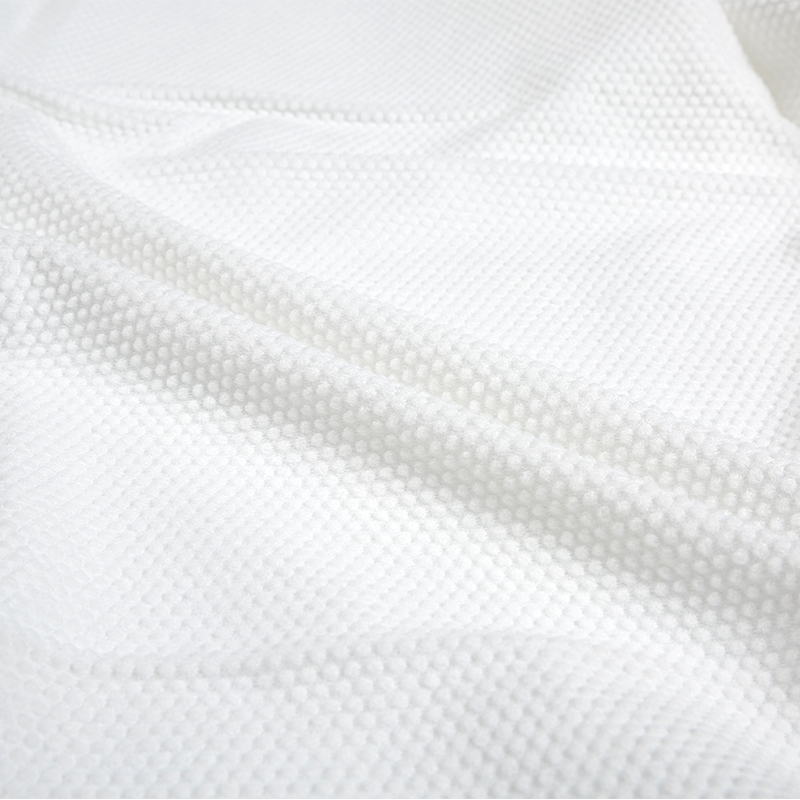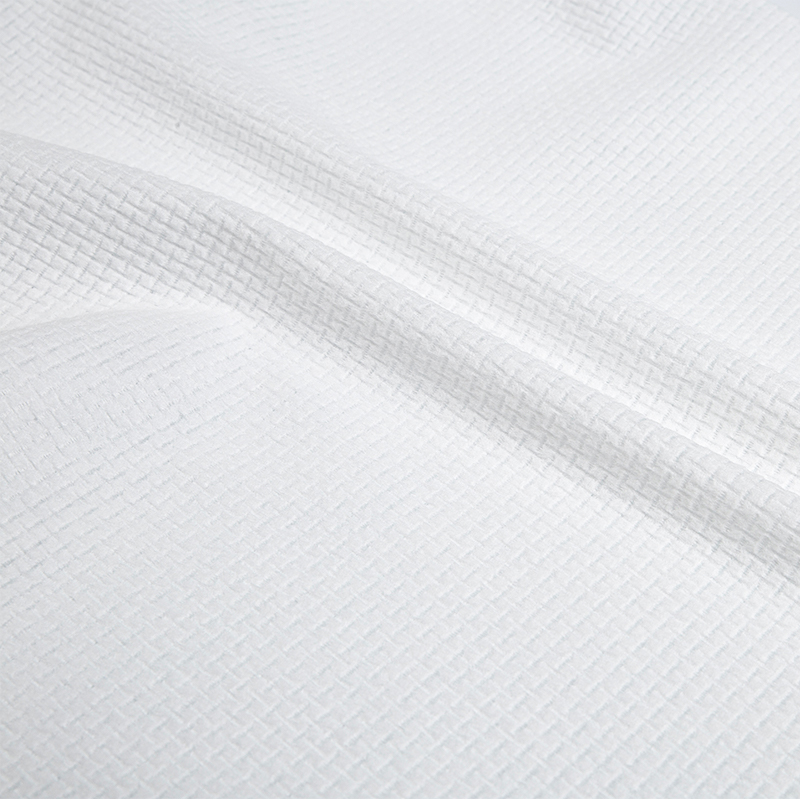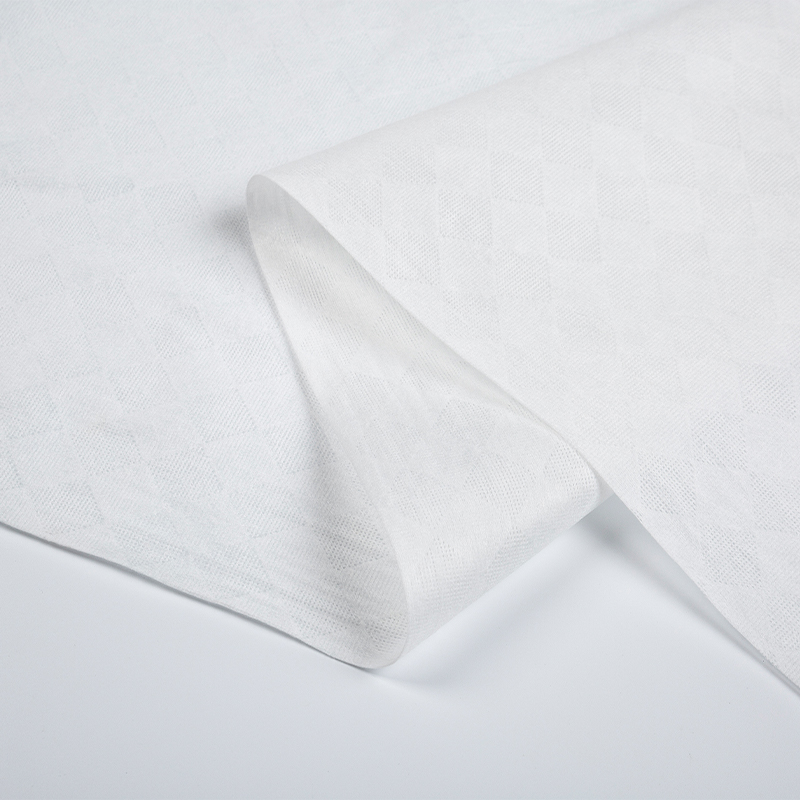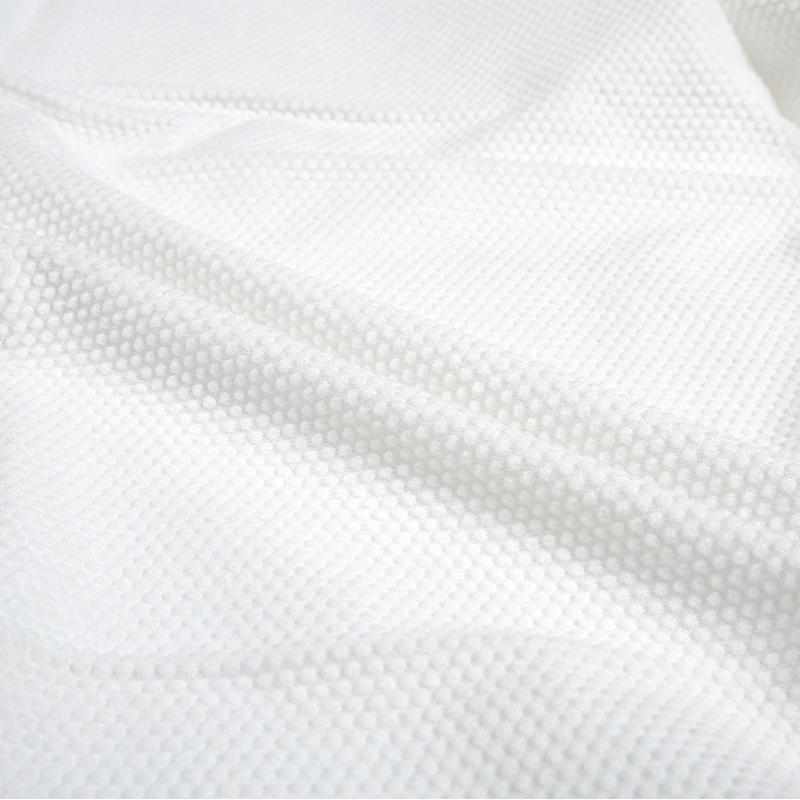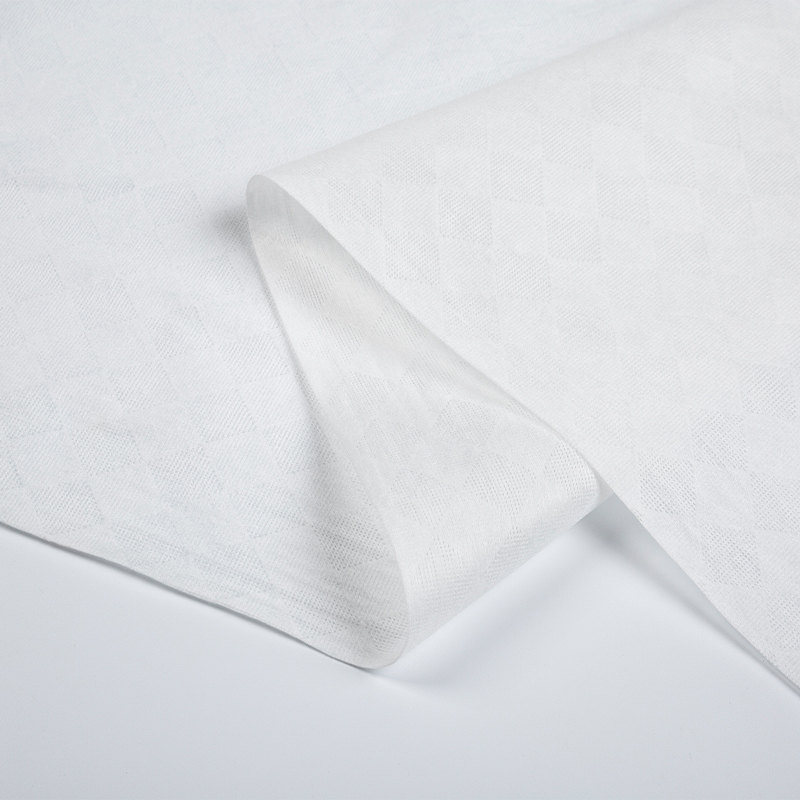Founded in 2022, Hangzhou Shunlong Nonwovens Technology Co., Ltd. is a professional China nonwoven fabric manufacturer and non-woven raw material factory
1. Material composition and degradability of Spulace non-woven fabrics
Spunlace non-woven fabric is a non-woven fabric in which fibers are interwoven together through high-pressure water flow. Its raw materials mainly include natural fibers and synthetic fibers, and the degradability of each material is significantly different.
Natural fibers: Natural fibers (such as cotton, wood pulp fibers, etc.) are commonly used in spunlace non-woven fabrics. These natural fibers usually have good degradability. In the natural environment, natural fibers can be decomposed into carbon dioxide, water and other harmless substances through the action of microorganisms. Wood pulp fiber, in particular, is a biodegradable material that degrades within a few months to a year under the right environmental conditions, such as moisture, warmth and aerobic conditions.
Synthetic fibers: Unlike natural fibers, synthetic fibers (such as polyester, polypropylene, etc.) are widely used in spunlace non-woven fabrics. These synthetic fibers are derived from petrochemicals and are generally more durable and corrosion-resistant, so they degrade more slowly. In particular, polypropylene non-woven fabrics usually take decades or even longer to completely degrade, which puts a certain amount of pressure on the environment.
Although synthetic fibers have poor degradability, with the advancement of degradable technology, more and more manufacturers are beginning to try to introduce bio-based materials (such as polylactic acid PLA, PHA, etc.) into the production of Spunlace non-woven fabrics. The base material has better degradability and does not produce harmful substances.
2. Degradation mechanism of spunlaced non-woven fabrics
The degradation process of Spulace non-woven fabrics can be divided into two main methods: biodegradation and photodegradation.
Biodegradation: Biodegradation is the process of decomposing materials under suitable conditions by microorganisms such as bacteria, fungi, actinomycetes, etc. Natural fibers such as wood pulp and cotton gradually break down into carbon dioxide and water through the action of bacteria and fungi, a process that can last from several months to a year. In contrast, synthetic fibers take longer to degrade, and harmful substances may be released during the degradation process. For example, some plastic components may decompose into microplastics and continue to pollute the environment.
Photodegradation: Photodegradation refers to the decomposition of materials under the influence of sunlight. When synthetic fibers, especially polypropylene and polyester, are exposed to ultraviolet (UV) rays, their molecular chains break, causing the material to degrade. However, this degradation process usually takes a long time, and in some cases, the degraded products may be potentially harmful to the environment. In order to increase the degradation speed, some manufacturers are studying adding ultraviolet absorbers or degradation catalysts to non-woven fabrics to accelerate the degradation process.
3. Degradation performance challenges of Spulace non-woven fabrics
Although the natural fiber part of Spunlace non-woven fabric has good degradability, because synthetic fibers are often added during its production process, the degradation process of the entire product is relatively slow and there are some challenges:
Synthetic fibers degrade slowly: Common synthetic fibers such as polyester and polypropylene degrade slowly and may take decades to completely degrade. This allows Spunlace nonwovens based on these materials to persist in the environment for a long time, causing plastic pollution, especially in ecosystems such as landfills and oceans.
Influence of environmental conditions: The degradation rate is closely related to environmental conditions. Spunlaced non-woven fabrics can degrade quickly in warm, humid and aerobic environments, but the degradation rate is significantly reduced in dry and anoxic environments. In addition, the low microbial activity in some environments will also affect the degradation efficiency.
Microplastics issue: During the degradation process, synthetic fibers have the potential to break down into microplastics. Not only are these tiny particles difficult to remove, they may also enter water bodies and the food chain, posing potential risks to the ecological environment and human health.
Effect of additives and dyes: Certain chemical additives (such as dyes, preservatives, plasticizers, etc.) used in the production process may affect the degradation performance of Spulace non-woven fabrics. Some chemicals may inhibit the activity of microorganisms, delay the degradation process, and even cause the release of harmful substances, causing environmental pollution.
4. Technologies and solutions to improve degradation performance
In order to improve the degradability of Spunlace non-woven fabrics, the industry has adopted a variety of methods and technological innovations:
Use degradable materials: More and more manufacturers are using bio-based materials (such as PLA, PHA, etc.) and degradable synthetic fibers. These materials have good biodegradability and can be decomposed into harmless substances in a short time, reducing environmental pollution.
Nanotechnology and additives: The degradation process of synthetic fibers can be accelerated through the use of nanotechnology or the addition of degradation catalysts. These additives can promote the decomposition of materials and reduce the generation of microplastics, thus reducing the environmental burden.
Increase the recycling rate: Increasing the recycling rate of non-woven fabrics is also one of the keys to improving environmental performance. Some polyester and polypropylene fibers can be reprocessed into new non-woven products or other plastic products after recycling, reducing resource waste and environmental pollution.
Green production process: Improving production process is also an important measure to improve environmental performance. By reducing the use of harmful chemicals, optimizing water and energy consumption, and reducing pollution emissions during the production process, it helps to improve the overall environmental protection level of Spunlace nonwovens.
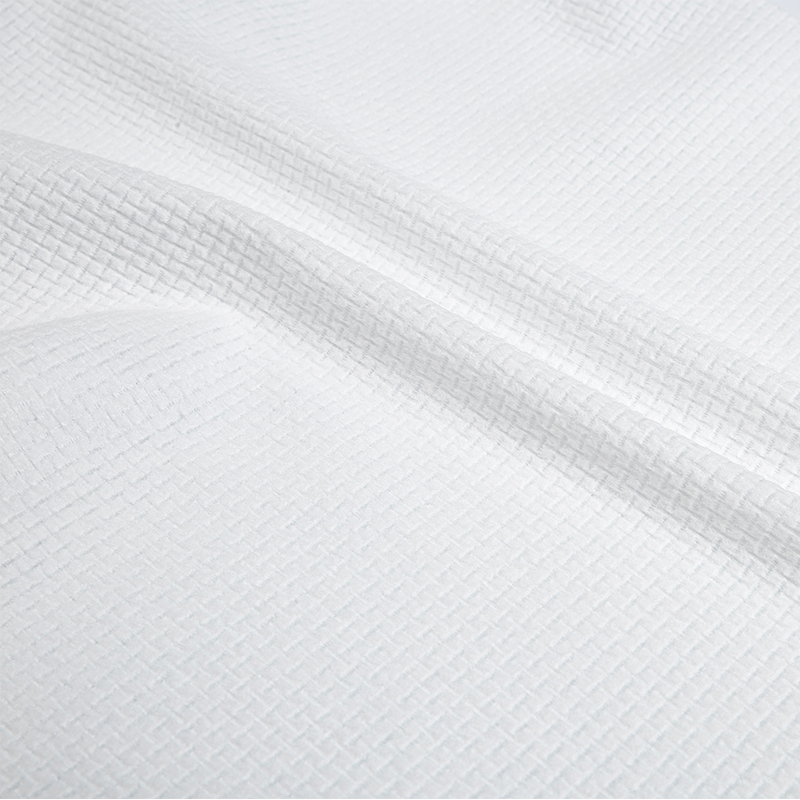

 English
English 日本語
日本語 русский
русский Español
Español